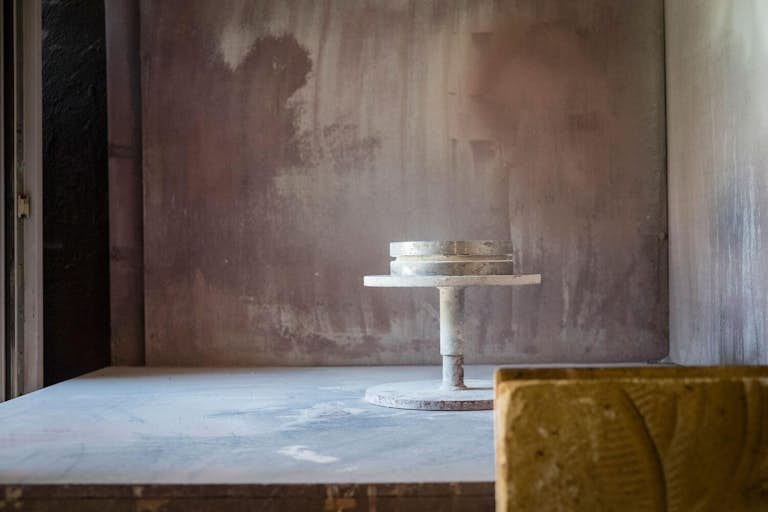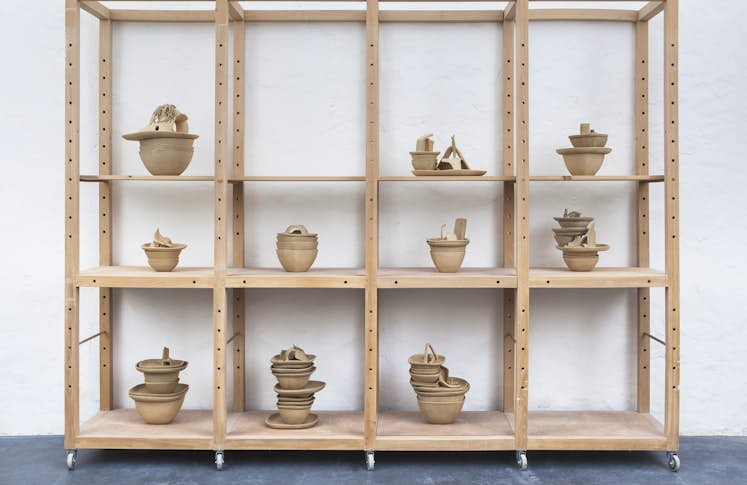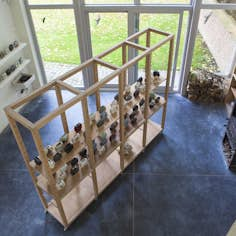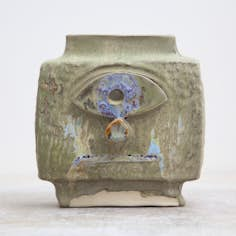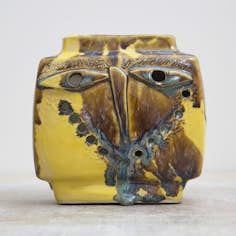The Atelier Pierre Culot is interested in artists whose work is in some way related to ceramics. Last June, its directors really enjoyed the exhibition by the artist duo Mon Colonel & Spit, presented at Alice Gallery. Intrigued by the creative universe of these two people from Liège, at once generous and iconoclastic, funny and uninhibited, the Atelier Pierre Culot offered them a residency, which the duo accepted.
Éric knew Pierre Culot's work. Éric Bassleer has a passion for ceramics, and became interested in his world when he came across a vase made by the artist at a flea market. In Roux-Mirroir, the duo enjoyed the tranquillity of the countryside, taking pleasure in meeting the neighbours and locals. Mon Colonel & Spit also enjoyed discovering the studio and its history. He was intrigued by the Citroën vase. It was created by Pierre Culot for the French car manufacturer in 1970. At the time, every new owner of a Citroën received this vase as a gift. We wondered," explains Mon Colonel, "what might be going through people's minds when they received this gift. The vase was the inspiration for the 100 pieces designed and created by the duo during their residency.
The duo is made up of Éric Bassleer, aka Mon Colonel (Liège, 1974), and Thomas Stiernon, aka Spit (Liège, 1977). They formed following the split in 2008 of collectifERS, a collective of graffiti artists and street artists. Their work is produced by four hands. The artists express themselves through drawing, painting, sculpture, photography, installations and, in recent years, ceramics. In addition to the streets of Liège, their influences range from the Beat Generation to graffiti, Art Brut, Brutalist architecture and everyday noise. The duo have recently exhibited at BPS22, the Musée d'art de la Province de Hainaut, the Mima museum and ALICE Gallery in Brussels, and are also collaborating with Hervet Manufacturier in Paris.
